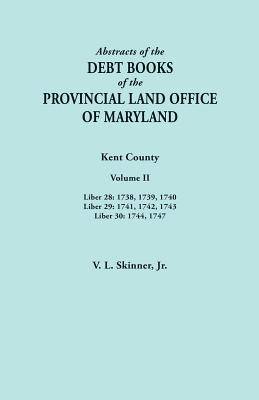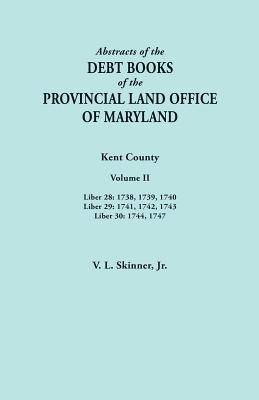
- Afhalen na 1 uur in een winkel met voorraad
- Gratis thuislevering in België vanaf € 30
- Ruim aanbod met 7 miljoen producten
- Afhalen na 1 uur in een winkel met voorraad
- Gratis thuislevering in België vanaf € 30
- Ruim aanbod met 7 miljoen producten
Zoeken
Abstracts of the Debt Books of the Provincial Land Office of Maryland. Kent County, Volume II. Liber 28
1738, 1739, 1740; Liber 29: 1741, 1742, 1743;
Vernon L Skinner
Paperback | Engels
€ 67,95
+ 135 punten
Omschrijving
The great value of debt bookis that they enable the researcher to track land ownership over various years in cases of intestate estates, land inherited by women, and land that is not specified in a will. This is the second volume by Vernon Skinner pertaining to Kent County debt books. It presents the contents of the debt books in tabular form: liber and folio citation, with any pertinent date; name of the person paying the taxes; and name of the tract of land and amount of acreage. A number of interesting facts emerge from the Kent County debt books, including that the county had erected a free school by 1735 and that the towns of Chestertown and Georgetown were established communities in the county by 1738. A number of Kent County landowners actually lived in other Maryland counties, as well as places in Delaware, Pennsylvania, Massachusetts, England, and Barbados.
Specificaties
Betrokkenen
- Auteur(s):
- Uitgeverij:
Inhoud
- Aantal bladzijden:
- 382
- Taal:
- Engels
Eigenschappen
- Productcode (EAN):
- 9780806358611
- Verschijningsdatum:
- 2/02/2018
- Uitvoering:
- Paperback
- Formaat:
- Trade paperback (VS)
- Afmetingen:
- 140 mm x 216 mm
- Gewicht:
- 439 g

Alleen bij Standaard Boekhandel
+ 135 punten op je klantenkaart van Standaard Boekhandel
Beoordelingen
We publiceren alleen reviews die voldoen aan de voorwaarden voor reviews. Bekijk onze voorwaarden voor reviews.








